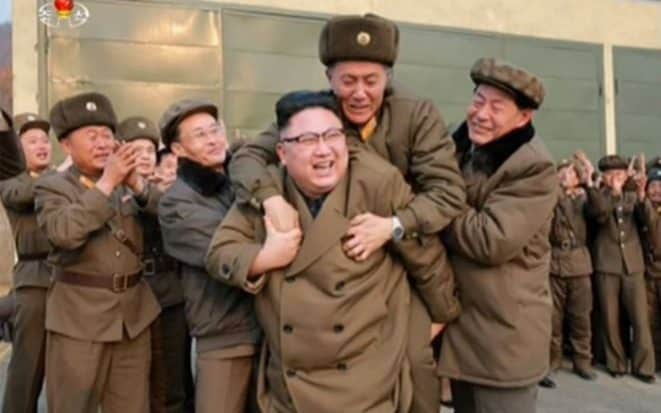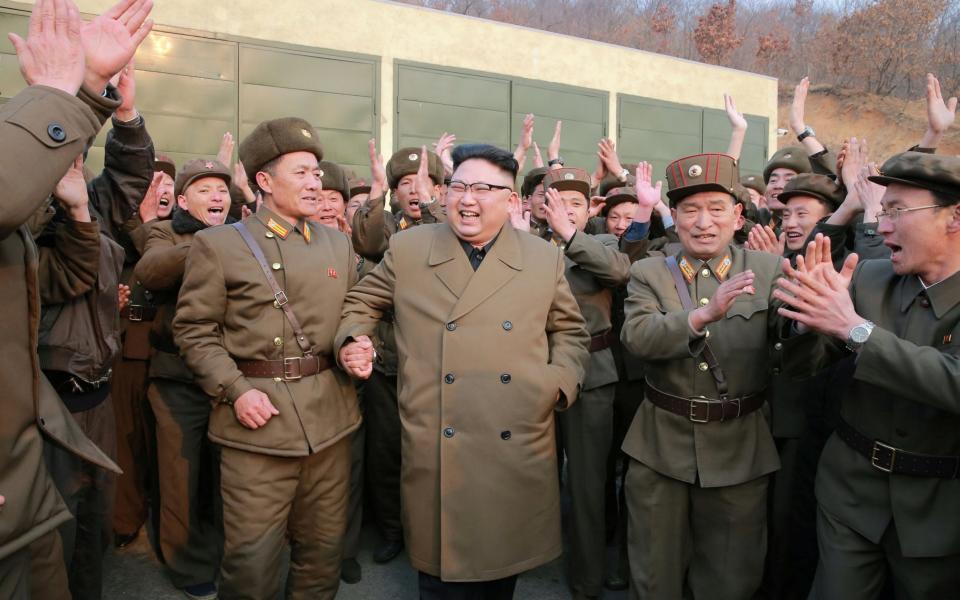Why did this man leap on Kim Jong-un's back?

Kim Jong-un, supreme leader of North Korea, is not generally regarded as being a playful or approachable figure.
So when the Korean Central News Agency issued a number of photos earlier this week to accompany claims the nation had successfully tested a high-performance rocket engine, the image above stood out somewhat.
Who was the man apparently being given a piggyback by the dictator, and what was the thinking behind the photo?
According to the BBC, his uniform is that of a mid-level officer of the Strategic Rocket Forces, the division of the Korean People's Army that oversees strategic defence missiles - including nuclear weaponry.
The stage-managed photo is intended to bolster the image Kim aims to present to North Korean citizens - a less stern and forbidding face than the one he presents to the outside world.

North Korean observer Michael Madden told the BBC that the photo illustrates some of the differences between the dictator and his predecessors.
"Nobody would dare piggyback his father or even his grandfather," said Madden.
"But this fits into the image [Kim] Jong-un has tried to cultivate - that he is more open, on an interpersonal basis, than his father.
"It conveys a certain sense of political confidence in his rule and leadership of the country. If he didn't feel secure, then he wouldn't allow these images to be disseminated - he would need to appear distant and cold."
On Wednesday this week, three days after the photo is thought to have been taken, another North Korean missile launch is understood to have ended in failure. The U.S. Pacific Command said in a statement that the missile appeared "to have exploded within seconds of launch."

 Yahoo News
Yahoo News 
